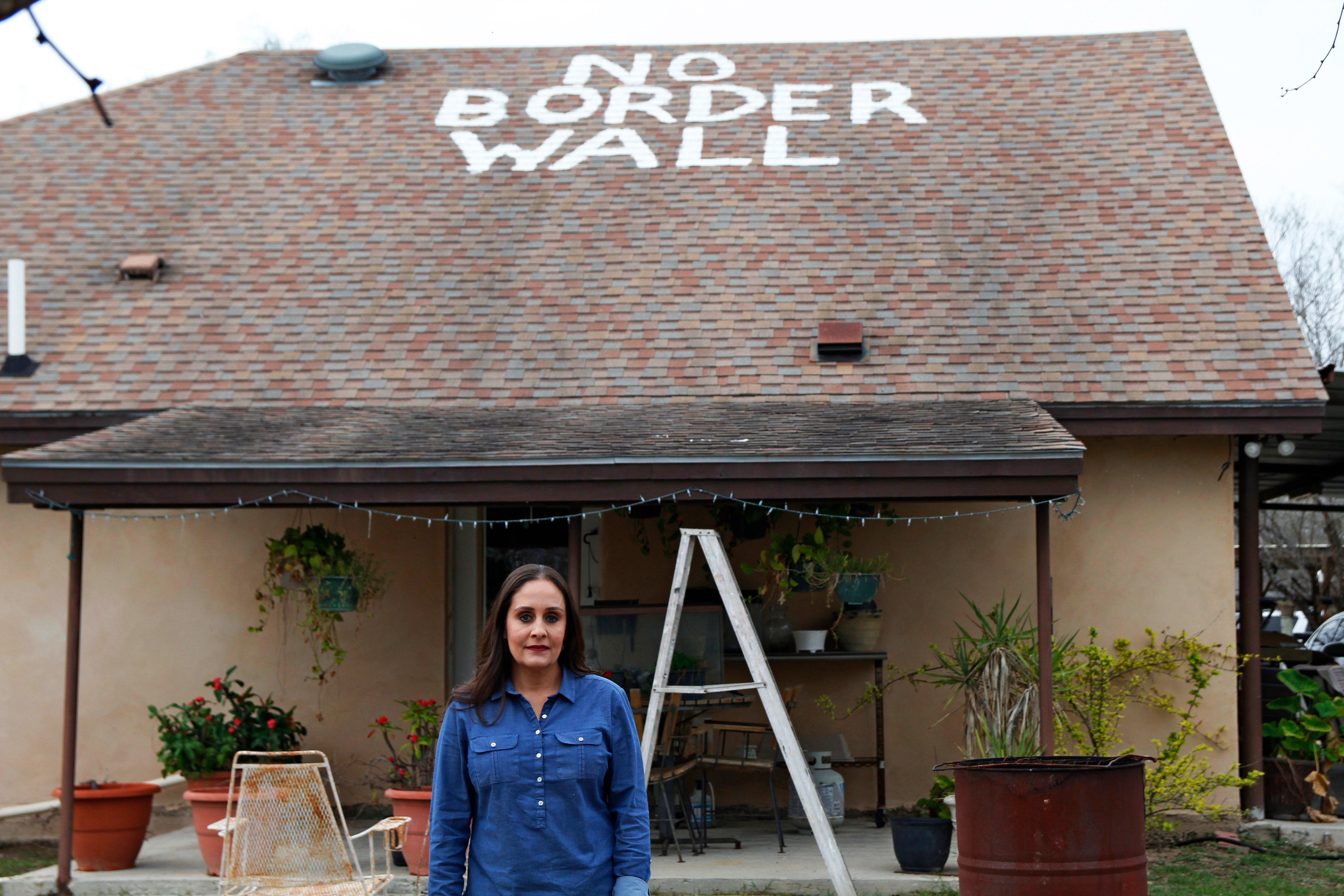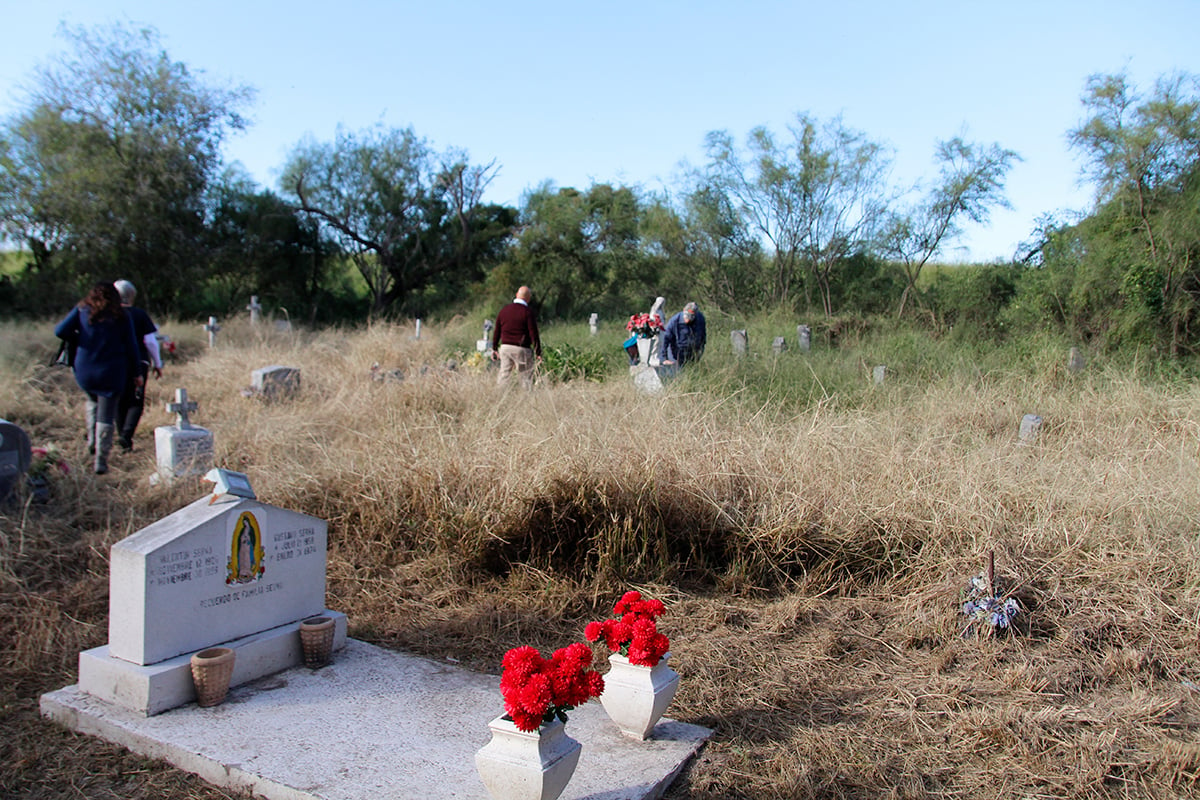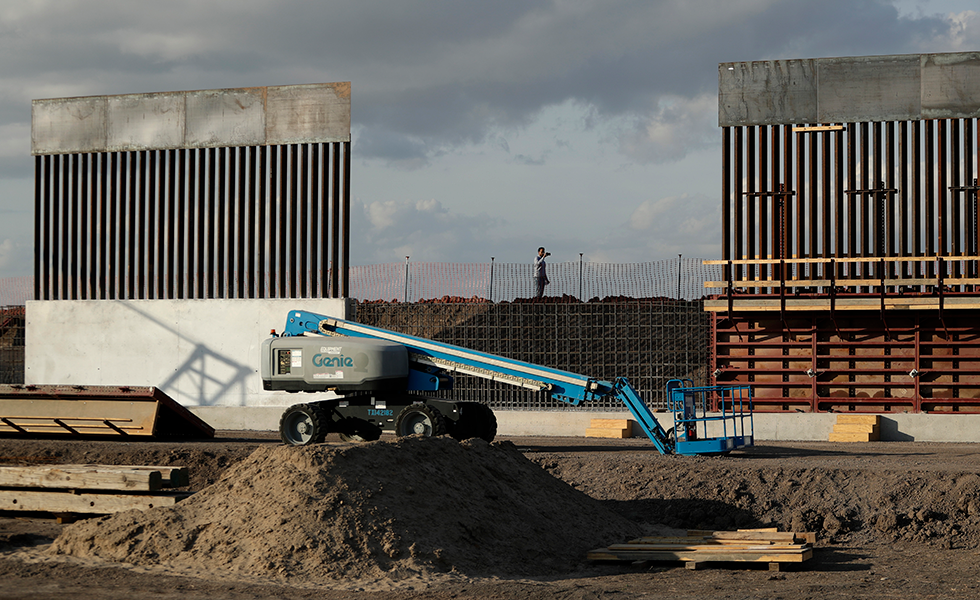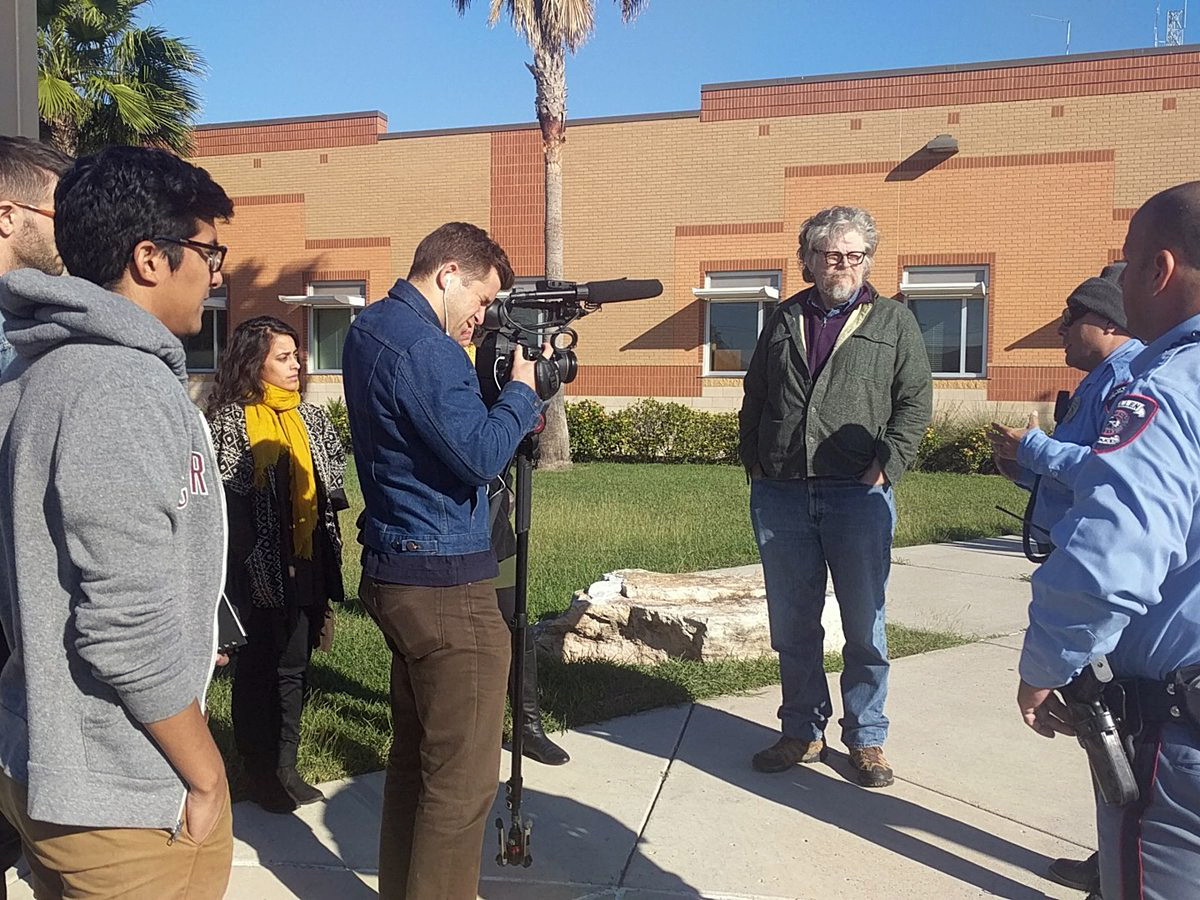
Border Patrol Calls Cops on Lawyers, Activists Trying to Attend ‘Stakeholder’ Meeting
Police asked civil rights attorneys and opponents of the border wall to leave a Border Patrol station in McAllen, where an invite-only border wall meeting was taking place.

Above: Nine activists and civil rights attorneys voluntarily left after Border Patrol confirmed to McAllen police they wanted to press trespass charges.
Outside the McAllen Border Patrol station Wednesday morning, a group of about nine anti-border wall activists and civil rights attorneys attempted to attend a quarterly, invite-only Border Patrol meeting for local landowners and “stakeholders.” There, attendees could ask questions of Border Patrol officials about a proposed 6-mile stretch of wall to be built in February, just south of Mission. Border Patrol, however, had other ideas.
Within minutes of the group arriving, a Border Patrol agent called the McAllen Police Department. Three officers showed up to threaten the group with criminal trespassing charges and force them to leave. Activists say the incident is the latest in a long line of transparency-blocking moves by the federal government to keep border wall plans largely under wraps. The feds waived laws requiring public meetings and some environmental assessments.
One of the attorneys to be turned away was Karla Vargas of the Texas Civil Rights Project, which represents the National Butterfly Center and other landowners. “I’m shocked about the lack of information regarding all of this,” Vargas said. “Who knows what information is being given in there? … I doubt they’re informing landowners about all the rights they have, and I think they’re afraid we’re going to do that.”
Gonzalez and the other officers called the area “private property,” drawing pushback from members of the crowd who pointed out it was a federal building.
When Vargas insisted on speaking to a U.S. Customs and Border Protection supervisor, Melissa A. Lucio, patrol agent in charge of the McAllen station, came outside to speak to the group. Lucio said the event was not “an official wall meeting,” but a periodic gathering for invited landowners with property near the border. Vargas questioned whether the border wall would be discussed and Lucio said yes, if attendees asked about it. Lucio then asked the group to leave and alleged they were “trespassing.”
A coalition of local environmental and activist groups organized the people who attempted to attend the meeting, saying on a Facebook event page that “We are all stakeholders” and that they hoped Border Patrol would open the process to the public. The proposed 6-mile stretch will consist of 18-foot-tall steel bollards atop a concrete levee wall and will slice through a national wildlife refuge and a state park.
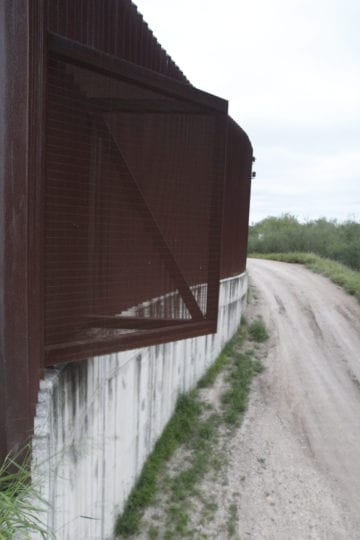
Gary Cooper, a McAllen resident who said he owns a home a few miles from where the new border fence is scheduled to be constructed starting in February, said he was at first allowed inside the building before being asked to leave since he was not invited. Cooper was indignant, saying he felt he had a stake in the proceedings. “A home only has its value in real estate terms if people want to live there… the reason we want to live here is largely because of the rich natural habitat, and much of that will be behind the wall,” he said.
The Observer was not allowed inside the building, and was told by a Border Patrol officer there would be a meeting for media at some point in the future.
McAllen Police Department officer J.P. Gonzalez, one of three responding officers, said they had been called by Border Patrol and were reacting as they would to any property owner claiming trespass. Gonzalez and the other officers called the area “private property,” drawing pushback from members of the crowd who pointed out it was a federal building. After some tense back-and-forth, the group agreed to voluntarily leave, crossing the adjacent Military Highway. When meeting attendees later emerged, members of the press crossed back over to attempt to interview them, but were rebuffed again by police.
The Observer was able to speak briefly with one local landowner, 73-year-old Rey Anzaldua, who said the meeting was mostly uninteresting and about “community relations” — though folks did ask questions about the wall. Anzaldua said he asked where the agency was going to place access gates in the fence, and he was told vaguely that the matter would be worked out on an individual basis.
No arrests were reported. Customs and Border Protection and McAllen police did not immediately return requests for comment.
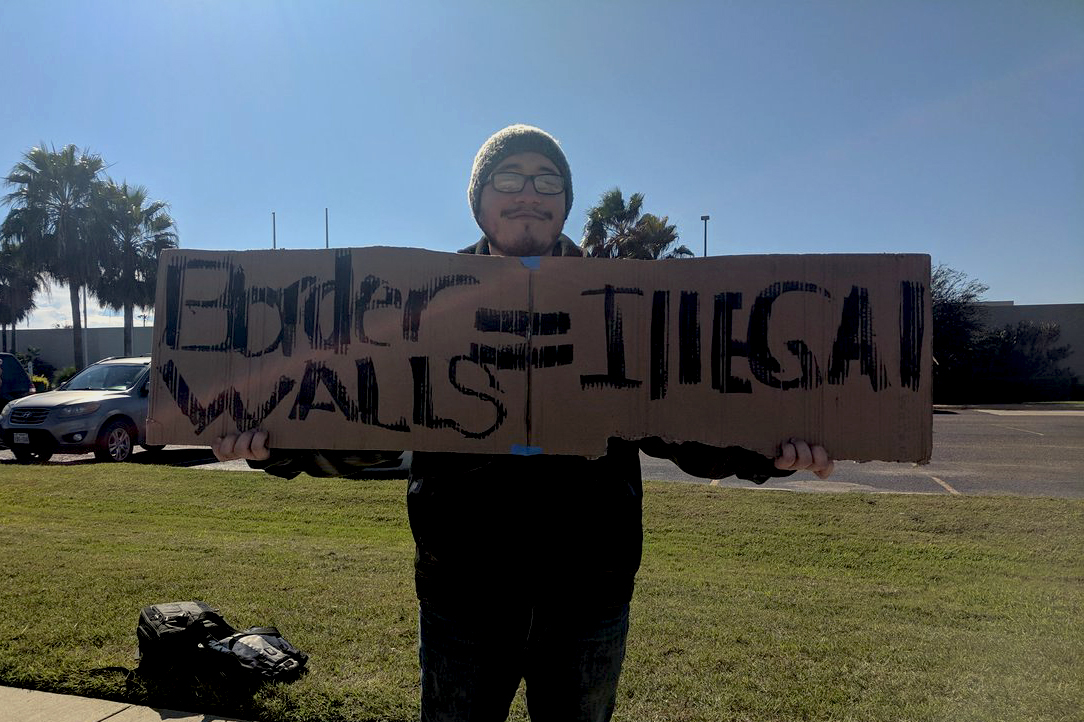
The kerfuffle came three days after activists gathered across from the same Border Patrol station to protest lack of public input in the wall construction process. In March, Congress allocated $641 million for 33 miles of border wall construction in the Rio Grande Valley, but activists and residents say they have remained largely in the dark about where and when the fence will be built. The agency did host a 60-day public comment period — opened in early September and only for mailed or emailed comments — and held a listen-only webinar.
The Department of Homeland Security last month waived more than two dozen federal laws in order to move ahead with border wall construction, including requirements for public meetings and further environmental assessment. Last week, CBP announced it had awarded SLSCO Ltd. a $145 million contract to begin construction just southwest of McAllen in February.
On Tuesday, the agency granted another $167 million contract for an additional 8 miles of levee wall further east in Hidalgo County.
Correction: This post initially reported that the recently approved 6-mile stretch of border wall would slice through a church property with a 119-year-old chapel. The 6-mile stretch actually stops a short distance away from the chapel, called La Lomita. However, the chapel is in the crosshairs of another proposed section of Trump’s wall.

